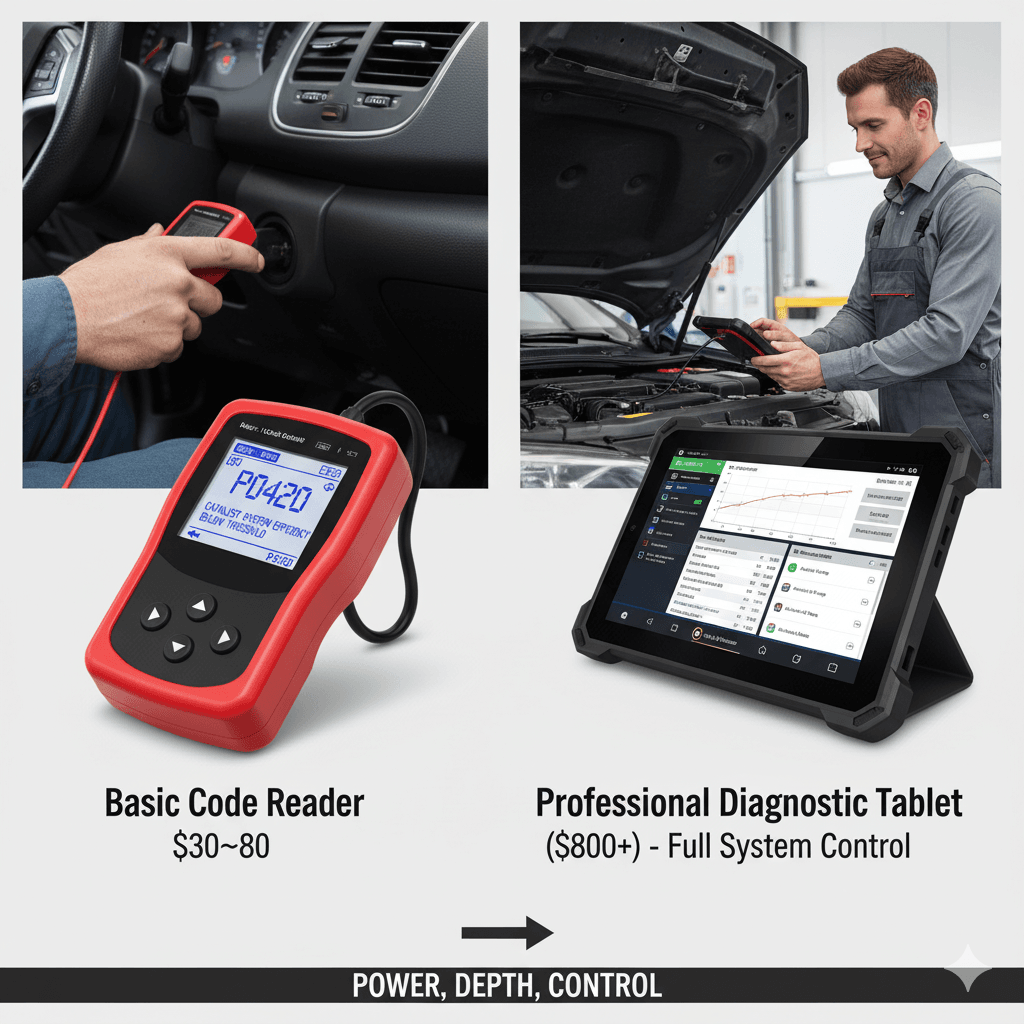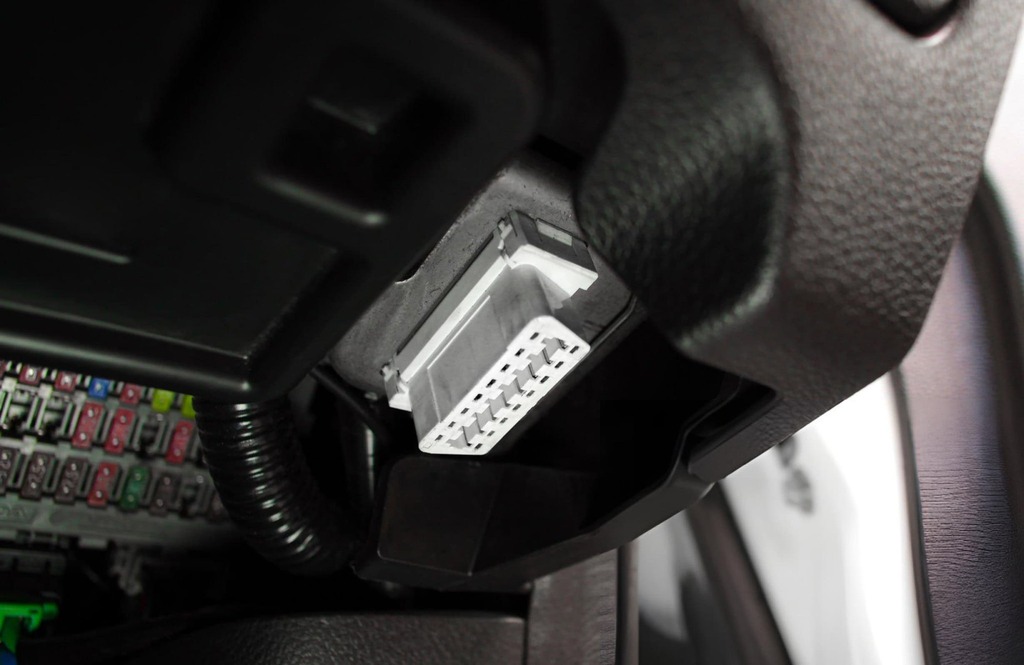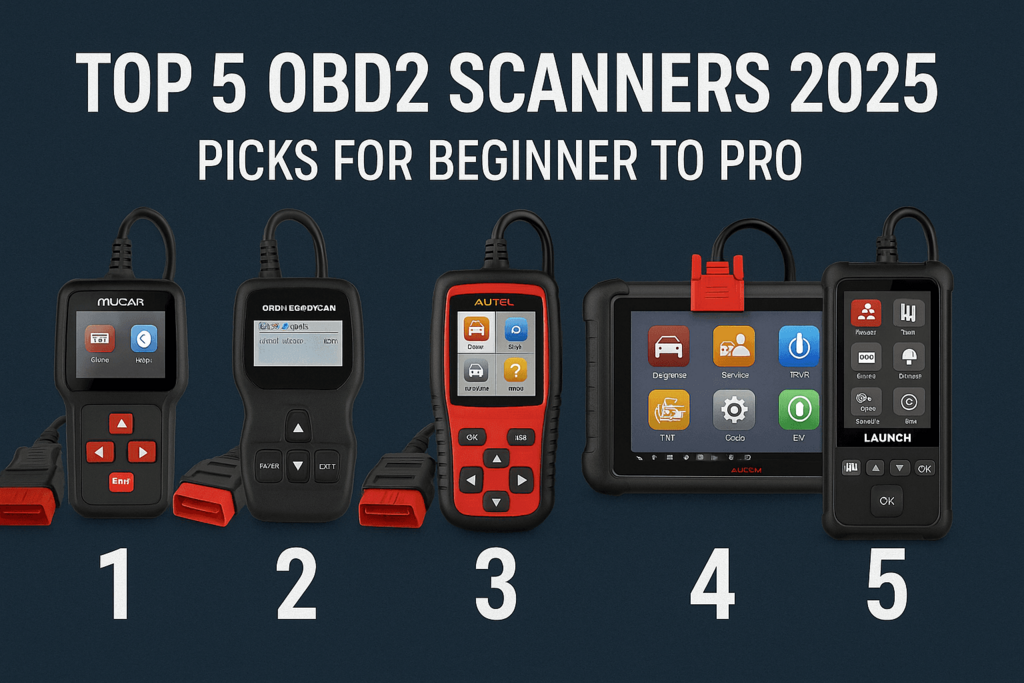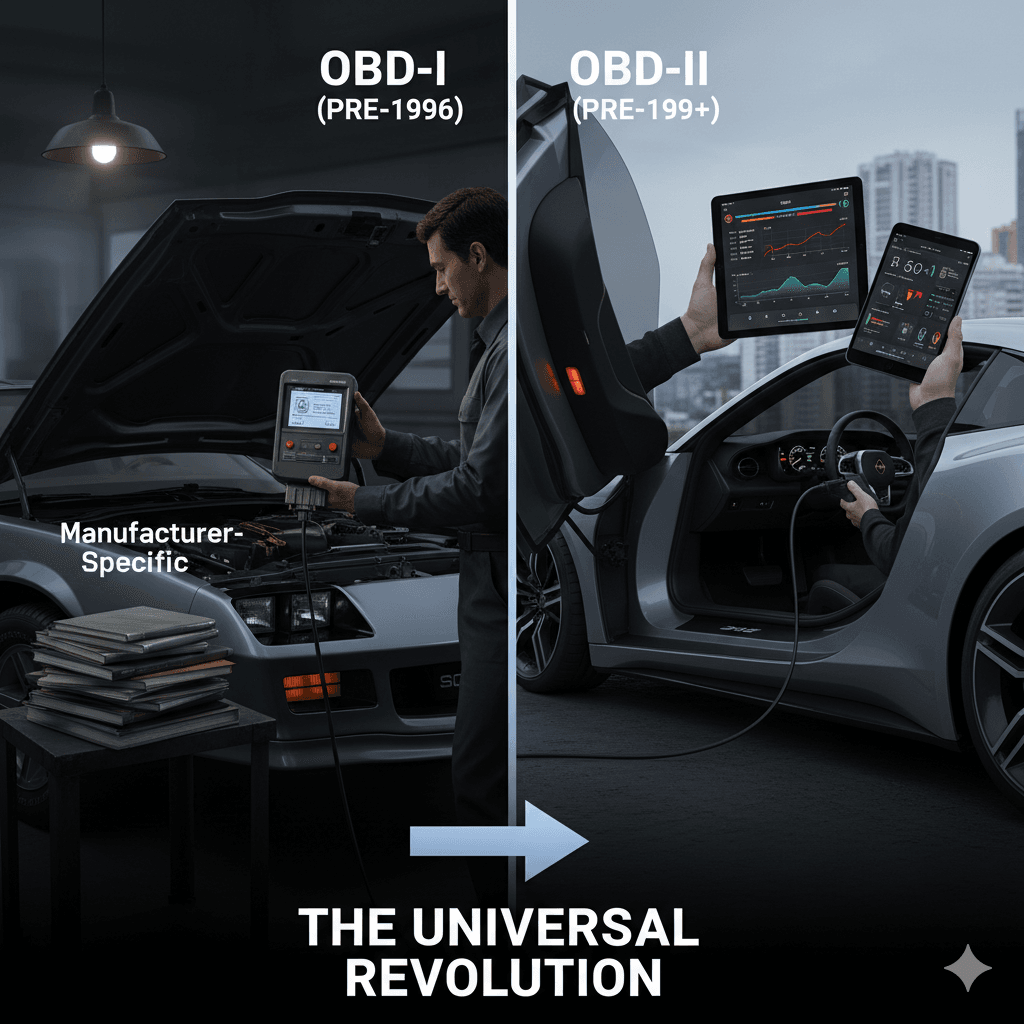The moment that dreaded ‘Check Engine’ light pops up, the first tool you reach for is an OBD2 scanner. A quick search reveals a massive price range, from small, sub-$30 Bluetooth dongles to sophisticated, professional diagnostic tablets costing thousands.
They all claim to read your car’s trouble codes, but when the price difference can be 100x, what exactly are you paying for?
The difference is far more than just a screen size; it’s about depth of diagnosis, system coverage, and the ability to control, not just read, your vehicle’s systems. This guide breaks down the essential distinctions between a basic, cheap OBD2 code reader and a high-end, professional diagnostic scanner, helping you decide which tool truly fits your needs.
Level 1: The Budget Code Reader (The “What” Scanner)
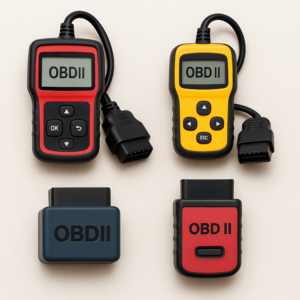
Typical Price Range: $20 – $80
The entry-level scanner, often a small handheld device or a Bluetooth adapter paired with a smartphone app, performs the most fundamental task of On-Board Diagnostics: reading and clearing generic trouble codes.
What You Get:
- Read & Clear Generic Codes (P-Codes): This is the core function. It reads the standardized Powertrain codes (P0xxx) that every 1996 and newer vehicle must report by law.
- I/M Readiness Status: Crucial for emissions testing, the scanner confirms if the car’s monitors (like the O2 sensor and catalytic converter) have completed their self-tests.
- Basic Freeze Frame Data: It captures a snapshot of operating conditions (engine RPM, speed, coolant temp) at the moment the fault code was set.
- Simple Interface: Usually a small monochrome or basic color screen. They are quick to use and require minimal setup.
Limitations of Cheap Scanners:
- Engine Only: They typically only access the powertrain control module (Engine Control Unit/ECU).
- No Non-Powertrain Systems: They cannot read codes for ABS (Anti-lock Braking System), SRS (Airbags), Transmission, or TPMS (Tire Pressure Monitoring System).
- No Bi-Directional Control: They are “read-only.” They can only listen to what the car is saying, but they cannot send commands back.
- Limited Code Definitions: Descriptions for codes are often generic, lacking the manufacturer-specific context needed for complex diagnostics.
Level 2: The Mid-Range Scanner (The “Deeper Data” Scanner)
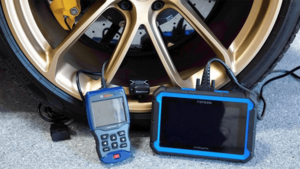
Typical Price Range: $100 – $400
The mid-range scanner bridges the gap between the casual DIYer and the serious enthusiast. These devices offer significantly enhanced software capabilities.
What You Gain:
- Full System Access (The Big Leap): These scanners can communicate with multiple modules beyond the engine, including the ABS, SRS (Airbag), Transmission Control Module (TCM), and Body Control Module (BCM).
- Real-Time Live Data Streaming with Graphing: They display hundreds of PIDs (Parameter IDs) in real-time, often with the ability to graph the data. This is vital for diagnosing intermittent issues.
- Manufacturer-Specific Codes (Enhanced Codes): They access the deeper, proprietary codes that car manufacturers use (e.g., specific codes for a door lock actuator or climate control fault).
- Service Functions (Basic): Many include common maintenance resets, such as Oil Life Reset, Electronic Parking Brake (EPB) Release, and sometimes Battery Registration.
Who Needs It?
This is the perfect tool for the dedicated DIY mechanic, the enthusiast who works on multiple vehicles, or someone who wants to perform most of their own maintenance and truly understand the root cause of complex failures.
Level 3: The Professional Scanner (The “Control and Customize” Scanner)
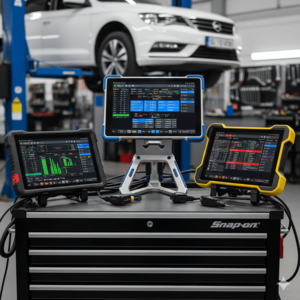
Typical Price Range: $800 – $5,000+
These high-end tools—often rugged tablets—are designed for full-time professional mechanics. They are an investment in speed, depth, and capability that can handle any job an automotive shop might encounter.
What Justifies the High Cost?
- Bi-Directional Control (The Game Changer): The scanner can send commands to the vehicle’s components. You can command the cooling fans to turn on, cycle the ABS pump, or activate a solenoid valve—all from the scanner’s screen. This active testing dramatically speeds up diagnosis.
- Advanced Programming and Adaptations (ECU Coding): They can perform procedures required after part replacement, such as Key Programming, Injector Coding, performing a Throttle Body Relearn, or bleeding the ABS system.
- Wider Vehicle Coverage and Lifetime Updates: They often include coverage for older OBD-I vehicles (with adapters), exotic brands, and commercial vehicles. The high price includes years of crucial software updates.
- Premium User Experience and Hardware: Features include ruggedized, drop-proof cases, fast processors for instant data graphing, and integrated repair databases or intelligent systems that suggest common causes and walk you through troubleshooting steps.
Comparison Summary: You Pay for Control and Depth
| Feature | Cheap Scanner ($20-$80) | Mid-Range Scanner ($100-$400) | Professional Scanner ($800+) |
|---|---|---|---|
| System Access | Engine only (Powertrain) | Engine, ABS, SRS, Transmission, BCM | All available systems/modules |
| Code Access | Generic P-Codes only | Generic and Manufacturer-Specific | All codes + detailed repair assistance |
| Live Data | Basic Freeze Frame only | Full Live Data Streaming with Graphing | Full Live Data + Advanced Filtering |
| Component Testing | None (Read-Only) | None or very limited | Bi-Directional Control (Active Tests) |
| Service Functions | None or Code Clear only | Oil Reset, EPB, SAS (Limited) | 35+ Service Functions (Programming, Injector Coding, DPF) |
| Target User | Casual Driver / Beginner DIYer | Serious DIYer / Home Enthusiast | Professional Mechanic / Auto Shop |
Making the Right Choice
The “best” OBD2 scanner is not the most expensive one; it’s the one that meets your diagnostic needs without overspending.
- Choose Cheap (Level 1) If: You only want to know why your Check Engine light is on, and you plan to take it to a mechanic for anything beyond a simple part replacement.
- Choose Mid-Range (Level 2) If: You are a dedicated DIYer, you own multiple vehicles, and you need to diagnose issues with the ABS or Airbag systems, as well as perform basic service resets.
- Choose Professional (Level 3) If: You are a full-time mechanic, run a repair shop, and need the ability to perform complex procedures like module coding or bi-directional component testing.
In short, the cheap scanner tells you that a symptom exists. The expensive scanner gives you the power and data to find the root cause and fix it with professional-grade precision.

